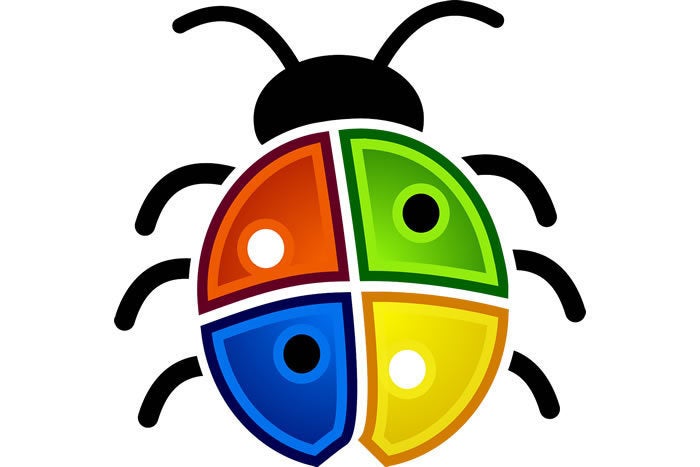Microsoft Patch Alert: Lots of lingering problems in a very messy month

Credit to Author: Woody Leonhard| Date: Thu, 25 Jan 2018 10:00:00 -0800
On the heels of a relatively benevolent December Patch Tuesday, the stream of patches pouring out of Microsoft (and Intel!) in January reached epic proportions. To be fair, it looks as if Microsoft got drawn into releasing its Meltdown/Spectre barrage early – on Jan. 3 – but they were so buggy they were withdrawn for AMD processors on Jan. 8, and gradually re-released in phases over the next two weeks.
If you had Automatic Update turned on, and you’re running an AMD machine that’s more than a couple of years old, chances are good that you woke up to a blue screen, and restoring your system took two magic incantations and an Act of Congress. Tens of thousands – possibly hundreds of thousands – of AMD machines may have been bricked by this month’s patches. But be of good cheer. Microsoft released KB 4073578 (“Unbootable state for AMD devices in Windows 7 SP1 and Windows Server 2008 R2 SP1”) and KB 4073576 (same for Win8.1 and Server 2012 R2) to fix your problem. Of course, you have to be able to boot your computer to install the updates.
Never mind.
Then there’s .NET.
So far this month, we’ve seen patches roll out like this:
That is an enormous pile of patches; even the folks who are paid to watch patches full time are confused.
Not to be outdone by Microsoft, Intel created mayhem by releasing, then yanking, its Meltdown/Spectre BIOS and UEFI firmware patches for almost every Intel computer released in the past five years. Intel’s documentation rivals that of Microsoft for ambiguity, hyperbole, and obfuscation.
Here are the latest links to BIOS/UEFI Meltdown/Spectre recall advice from the major hardware manufacturers:
If you have new information about any of those vendors, please let me know on the AskWoody Lounge.
No matter which version of Windows you patch, you need to get your antivirus program to signal to Windows that it’s compatible with this month’s updates.
The Win10 Fall Creators Update patch on Jan. 18 seems to have shaken out the major problems with Win10 1709.
The Win10 Creators Update patch on Jan. 17, similarly, seems to fix the outstanding problems with this month’s changes to Win10 1703. That patch, KB 4057144, has to be downloaded and installed manually.
The Win10 Anniversary Update patch on Jan. 17 – again, manual install only – fixes a bunch of bugs in Win10 1607, but it also clobbers Windows Defender Credential Guard (which you probably don’t use).
With the release of KB 4077561 on Jan. 24, Microsoft has fixed many of the acknowledged problems with this month’s Monthly Rollup and Security-Only (manual installation) patches for Win7 and Win8.1. That said, there’s still a great deal of debate about the proper installation sequence of patches, re-patches and old patches. As usual, Microsoft hasn’t said anything.
This looks like a mess. You can get the details in my Jan. 19 column, but the basic idea is that the original .NET patches for .NET 4.6/4.6.1/4.6.2/4.7/4.7.1 were all bad, and have to be augmented by additional patches. The font problems in the original patches have been fixed in general, but only if you install these latest patches.
Then there’s the Fixit tool KB 4074906 that fixes “Windows Presentation Foundation (WPF) applications that request a fallback font or a character that is not included in the currently selected font.”
It appears as if the Office 2016 patch KB 3178662 throws an installation error 0x8007006e. The Office folks, who are usually good about acknowledging problems, haven’t picked this one up yet. Solution? Uninstall “Microsoft Office Proofing Tools Kit Compilation 2016.”
There’s a laundry list of acknowledged problems with Outlook: To-Do Bar and Task List view not displaying events; Unable to “Save All Attachments” to a shared network drive; No Search results found when using All Mailboxes; Find Related option does not show results; Outlook 2010 will not start on WinXP after January updates. The bug that prevented Outlook 2016 from forwarding files attached to text messages was fixed on Jan. 24.
Wait.
If you have an irresistible urge to click “Enable Edits” on bogus Word documents, you can disable Equation Editor with a quick registry hack. Other than that, as long as you don’t use IE or Edge, there’s absolutely no reason to dive into the roiling mess of January updates.
In spite of the “Sky is falling” screams online, there’s no sign a single PC has been compromised by the Meltdown or Spectre vulnerabilities. Contrast that to the multitudes of machines that’ve been bricked by bad patches, and the untold users wondering why they have to unwind this month’s firmware updates.
The long and short of it: If you installed any of this month’s patches from Microsoft or your PC manufacturer, you joined the swelling ranks of unpaid beta testers. If your machine’s still working, thank your lucky stars.
There’s a reason why I recommend you turn off Automatic Update and wait for carnage to clear before installing the latest missives.
Group therapy for patchers continues on the AskWoody Lounge.